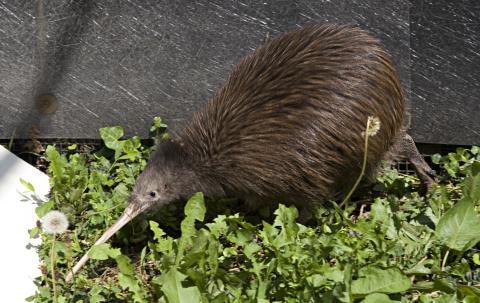Mar. 20, 2020

Animal care staff at the Smithsonian Conservation Biology Institute (SCBI) are mourning the loss of two kiwi who were found deceased in their habitat March 7 and 8. The male, Ngati Hine Tahi, and female, Ngati Hine Rua, were 15 years old. Before their deaths, both birds appeared to be healthy and did not have any history of illness. Preliminary findings suggest that an intestinal infection and bacterial-toxin production were the causes of death. A final pathology report will provide more information in the coming weeks. Their habitat, Kiwi Flats, has been quarantined, and SCBI’s remaining kiwi have been moved to other animal holding areas to avoid spread of any infectious agent. These kiwi were examined by veterinary staff and remain healthy.
Ngati Hine Tahi and Ngati Hine Rua arrived at SCBI in July 2010 as a gift from New Zealand. At the time, they were the first export of kiwi in more than 20 years, and adding them to the genetic pool in North America was a rare and valuable opportunity to breed and study this vulnerable species. Upon their arrival, SCBI held a ceremony with a traditional Maori blessing with former New Zealand Ambassador Roy Ferguson and Consul General John Mataira. Both birds came from the Ngati Hine people in New Zealand, and their bodies will be repatriated to the tribe for burial.
When Ngati Hine Tahi arrived at SCBI, he tipped the scales at 7.4 pounds, more than 40% above the ideal weight for brown kiwi. He had a propensity for stealing Ngati Hine Rua’s food and snacking on worms in his yard after rain. The extra weight made it difficult for Ngati Hine Tahi to get into position for successful breeding. Keepers devised a clever enrichment feeder that prevented him from overeating. Since females have longer beaks, keepers put their diets of meat, fruit and vegetables into the bottom of long tubes so that Ngati Hine Tahi could not reach Ngati Hine Rua’s food. Over time, he slimmed down to a svelte 4.8 pounds, and the pair successfully bred.
No comments:
Post a Comment